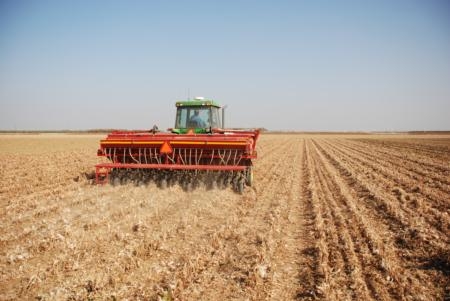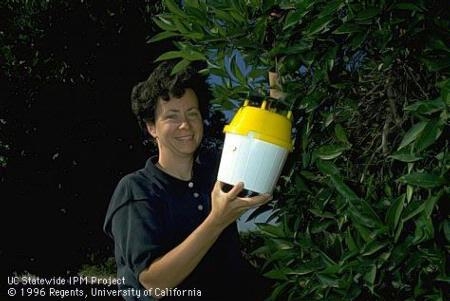- Author: Chris M. Webb
The University of California Agriculture and Natural Resources Division (UC ANR) has recently released a new priced publication, Cover Cropping for Vegetable Production: A Grower’s Handbook.
Written by a collaborative of UC researchers, including Ventura County Farm Advisor Oleg Daugovish this handbook brings together the expertise of many.
Topics include:
- Introduction of cover crops for vegetables and their uses
- Botany and species selection
- Agricultural soil ecology
- Water management and impacts on water quality
- Soil nitrogen fertility management
- Weeds
- Soilborne pathogens
- Plant and soil nematodes
- Arthropods
- Cover crop management
- Economics
We currently have a few copies for sale in the office, or you may purchase online. If purchasing online, please use promo code PRVEN56 to receive 10% off your order.

- Author: Chris M. Webb
A new volume of Topics in Subtropics is now available.
This newsletter is a collaborate effort of UCCE Farm Advisors throughout the state. Topics in this issue include:
- Organic Herbicides: Do they work? – An interesting research summary on organic herbicide products currently available. Suggestions for maximizing results are included.
- Snake Oil: Horticultural Myths and Legends – Practical tips for avoiding products that do not provide benefit or can possibly cause harm.
- Success Story Before There is a Problem – Ben Faber describes a common pest in Turkey that causes much damage to a wide range of plants, including citrus. Tropinota hirta Poda (Coleoptera, Scarabaeidae, Cetoniinae) feeds on flowers and reproductive plant parts, resulting in no fruit formation. While this beetle is has not yet been found in the United States, knowledge of potential method for control is already stateside.
To access this addition, as well as previous additions, of Topics in Subtropics please visit this page of our website.

- Author: Chris M. Webb
On Wednesday, September 7 from 7:30 am – 12:30 pm, UC Cooperative Extension Farm Advisor Oleg Daugovish will hold the 10th Annual Strawberry Production Meeting in Ventura County.
The meeting will be presented in English with simultaneous interpretation into Spanish. There is no cost to attend.
Scheduled topics include:
- Southern California strawberry research update: varieties and production.
- Investigation of Macrophomina and Fusarium spp., including research update on biology and management, and results from 2010-2011 non-fumigated field trials.
- Fungicide evaluations in strawberry.
- Lewis mite, thrips and Lygus research update.
- Update of herbicide efficacy and safety for nutsedge control in strawberry.
- California Strawberry Commission update on regulatory research inssues in strawberry production.
Continuous education credits have been requested from DPR.
Lunch will be provided. Details can be found here. To register, request special arrangements, or to ask questions please contact Oleg by email or by phone at (805) 645-1454 by August 31.

- Author: Chris M. Webb
Dandelions are part of the genus Taraxacum, which consists of about 40 species worldwide. Two of these species are found in California. Introduced from Europe, dandelion is a perennial that grows year round in most areas of our state.
Dandelions can live for years. Its taproot is strong and capable of reaching 10 to 15 feet deep, although typically the taproot travels only 6 to 18 inches deep. They can reproduce and regenerate quickly. Sections of root as short as 1 inch in length can produce new plants. The puffball many of us blew on as children, while asking for a wish, sends out hundreds of seeds that can travel for miles on wind currents. The seeds germinate at or near the soil surface at temperatures above 50°F.
With a high vitamin and mineral content, dandelion has been used historically as a medicinal plant. Teas, salads, beer and wines are also made from the roots, leaves and flowers. However, dandelions are mainly viewed as a major weed problem in turf, ornamental plantings, meadows, pastures, and alfalfa.
To learn more about this plant, please see UC’s Dandelions Integrated Pest Management for Home Gardeners and Landscape Professionals. Commercial growers can find crop specific management practices at the UC IPM website.

- Author: Chris M. Webb
Weed management in production agriculture is vital for high crop yields. Organic growers are wise to formulate a comprehensive weed control strategy, which can help them achieve economically acceptable weed control and crop yields.
UC’s free publication, Weed Management for Organic Crops shares practices to help reduce weed pressure in organic fields.
Topics include:
- Water management
- Crop competition
- Reducing the weed seed bank
- Cultivation
- Flamers
- Sterilization
- Mulches
- Beneficial organisms
- Chemical control




